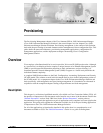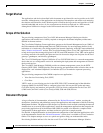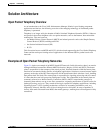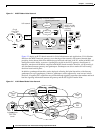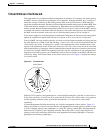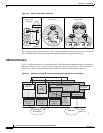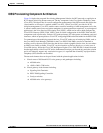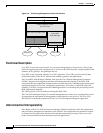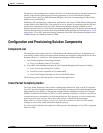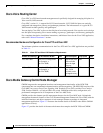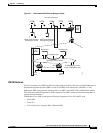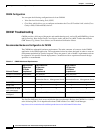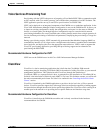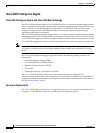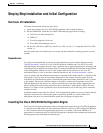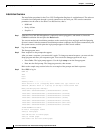Special offers from our partners!

Find Replacement BBQ Parts for 20,308 Models. Repair your BBQ today.

2-5
Cisco Internet OSS for VoIP: Infrastructure Manager Implementation Guide
OL-2706-01
Chapter 2 Provisioning
Solution Architecture
Virtual Entities in the Network
The requirements for coordinated element management are extensive. For instance, the media gateway
and MGC must be synchronized regarding the voice endpoints. Although the MGC has a concept of a
trunk, this concept is unknown to the media gateway that has the actual resources (TDM endpoints,
ports) that constitute the trunk. Therefore, the knowledge that both the media gateway and the MGC have
of the trunk must be managed in a coordinated way. Registration and synchronization of capabilities
must be assured. Beyond element management, failures in voice service, observed at the MGC, must be
correlated with failures in the bearer network. Resources used at the media gateway and controlled by
the MGC must be associated with voice service, which the media gateway has no concept of.
Users require support for such management coordination. Components in the bearer and control planes
operate in conjunction to perform the function of a switch, as far as voice service is concerned.
Usually an MGC and a set of media gateways are clearly associated with one another and jointly perform
the same function as a TDM switch, thus forming a virtual switch. This raises the expectation that this
virtual switch can, in fact, be managed as a switch, with a management system shielding many of the
aspects of the distribution of this virtual entity from users. This way, users do not have to be concerned
with the peculiarities of setting up control communications between the devices (interfaces that used to
be closed); for example, MGCP and signaling back haul, with the coordination of the configuration of
endpoints on the media gateway and of trunks that refer to those end points on the MGC and that now
collectively simply form virtual trunks of the virtual switch, and so on. Figure 2-3 depicts the concept
of a virtual switch.
Figure 2-3 Virtual Switch
Similarly, H.323 gateways and gatekeepers in a zone should be managed as just that, a virtual zone, as
if they were one entity. A virtual zone is in essence the H.323 flavor of a virtual switch. Also, gateways
and the signaling controller jointly provide the functionality of a virtual gateway that has SS7
capabilities.
A potent Management Solution should allow for a holistic management of those entities. Figure 2-4
depicts the concept of a virtual zone (which deals with dependencies between gateways within a zone,
as well as between gateways and gatekeepers), a virtual SS7 gateway (which deals with dependencies
between an H.323 gateway and a signaling controller that converts SS7 to Q.931 signaling for the
gateway), and a zone connection (which deals with dependencies between gatekeepers, or between
gatekeepers and directory gatekeepers).
Virtual switch
84409
V
V
V
V
V
V
V



